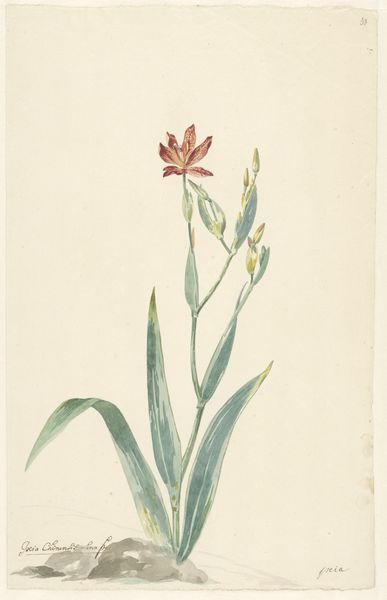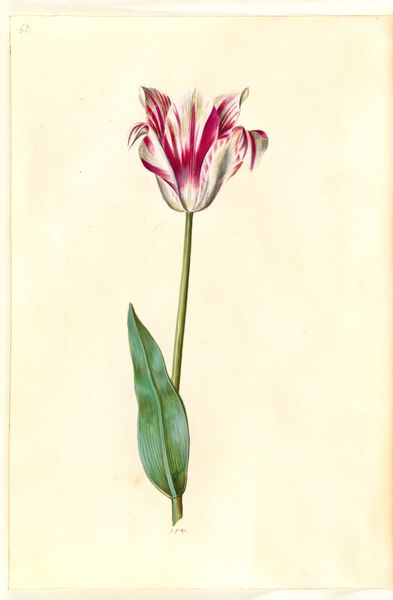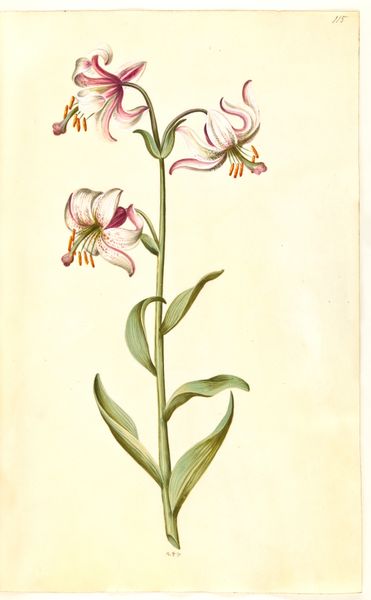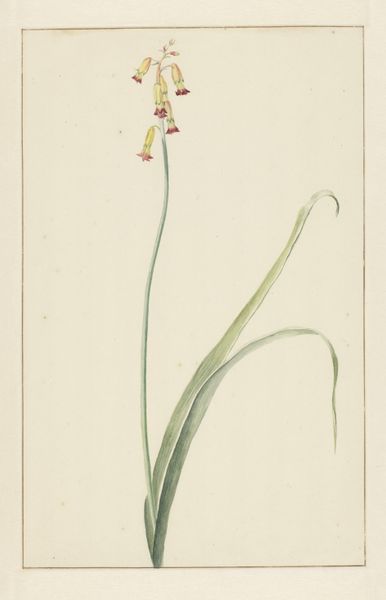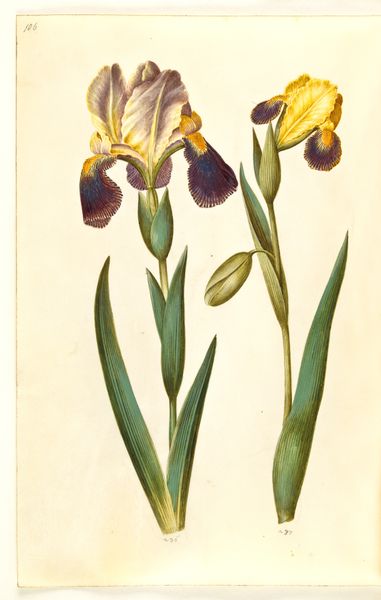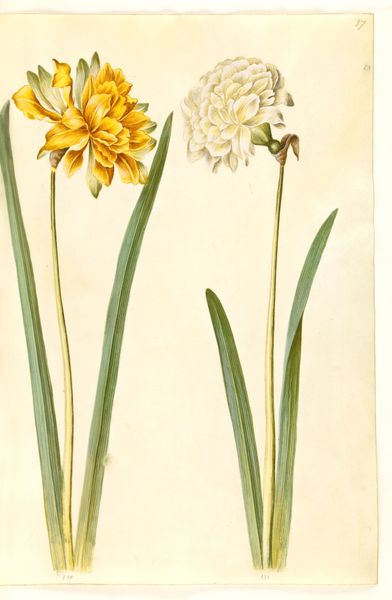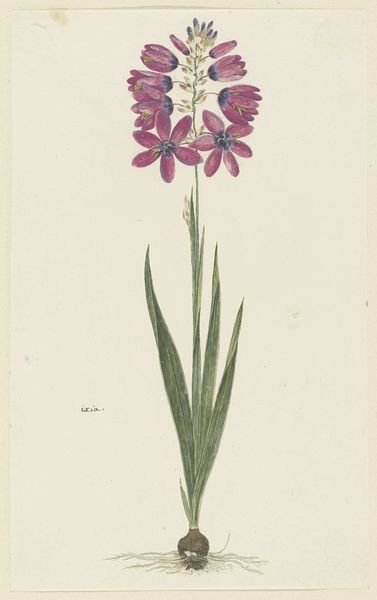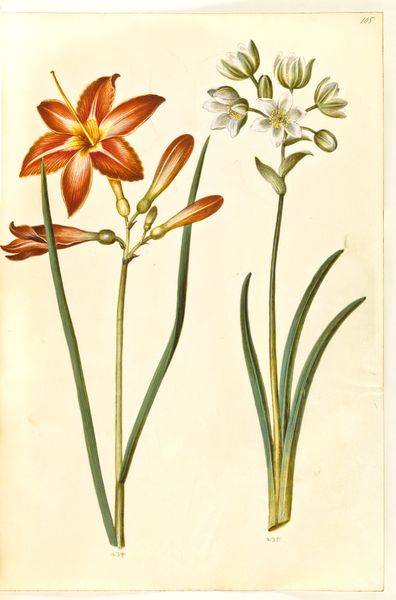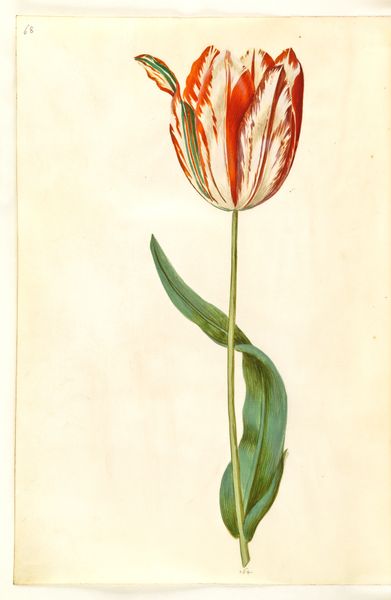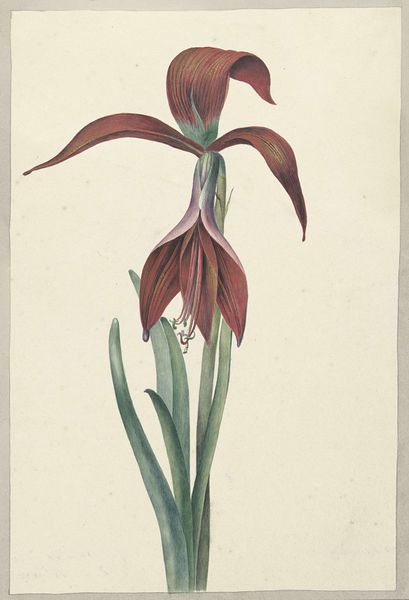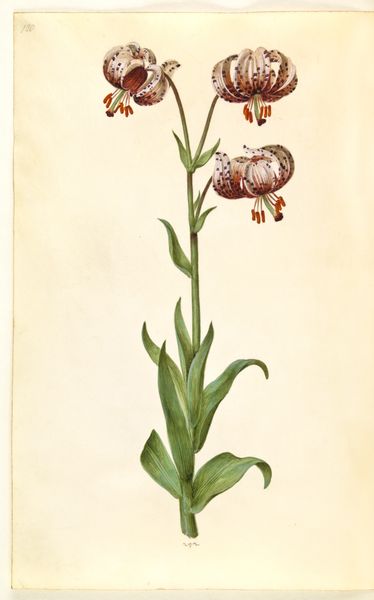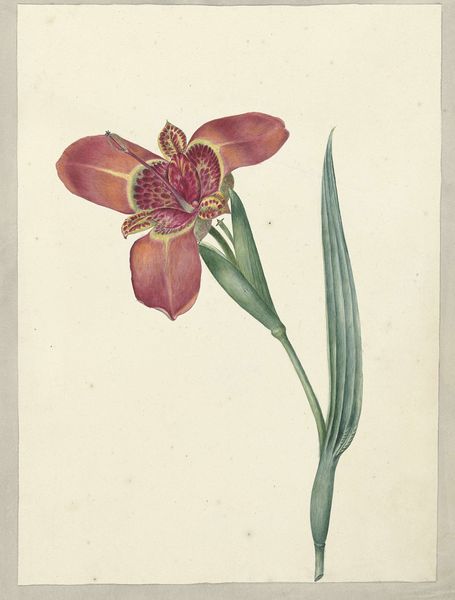
drawing, watercolor
#
drawing
#
landscape
#
watercolor
#
15_18th-century
#
watercolour illustration
#
northern-renaissance
#
botanical art
#
realism
Dimensions: height 385 mm, width 243 mm
Copyright: Rijks Museum: Open Domain
Curator: What a delight to see this vibrant bloom amidst our collection! This is "Zuidenwindlelie," a watercolor drawing made in 1779 by Vincent Jansz. van der Vinne. Editor: My first thought is sun-drenched. It feels like a quiet moment of pure, unfiltered sunlight captured on paper, radiating warmth. Curator: Exactly. And there's a precision, almost scientific, in the rendering, yet it doesn't feel cold. You feel that, too? It speaks to an intersection of art and natural science blooming—pun intended!—during the late 18th century. The rise of scientific illustration saw many artists exploring the natural world. Editor: I think about the colonial project as being inherently linked to the birth of scientific illustrations—and therefore to artworks like this one—so that imperial Europe could taxonomize and lay claim to nature and natural resources from other territories. Can we, perhaps, see it as a gesture towards appropriation through observation? Curator: That’s an intriguing lens, grounding the flower's apparent innocence. Perhaps this image signifies both wonder *and* a subtle assertion of control, a Western gaze capturing and cataloging nature, not necessarily *in* nature, but *as* nature, almost ready for...use. I see your point. Editor: Consider also the artistic perspective that has been lost here, since this is an illustration based on scientific values rather than artistic impression and emotion, for example. I am compelled to look at which territories this specific botanical subject has been "taken" from. Curator: I get it; there is some missing emotional component. But Van der Vinne's watercolor technique does make my artist's heart sing! It's delicate yet confident. He’s truly studied each leaf, each petal's curve. It’s like holding a fleeting moment still. Editor: It certainly prompts us to think about how we perceive and engage with the natural world—artistically, scientifically, and politically. Thank you for making me realize the multiple layers present in an artwork as "simple" as this flower drawing. Curator: Well said. A delicate dance of science and art and societal powers, forever preserved in paper and pigment. Beautiful and complicated.
Comments
No comments
Be the first to comment and join the conversation on the ultimate creative platform.
